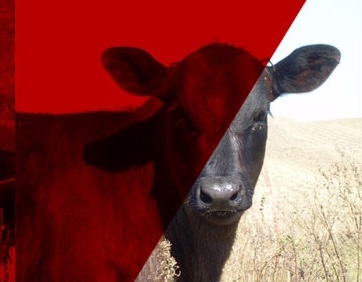Have you ever stopped to think about what the dollar value of the nutrients in hay is worth as fertilizer once they have been processed by the cow?
Mature cows at maintenance should excrete 100% of the nutrients they consume in terms of nitrogen, phosphorus and potassium.
For example, 100 cows are being fed 30 pounds per head per day on a dry matter basis of 17% protein alfalfa hay that is .3% phosphorus and 2.4% potassium. What is the value of the nutrients available to the pasture or field where the manure is being deposited?
3000 lbs. of dry matter alfalfa hay X .17 crude protein = 510 lbs. of protein. Nitrogen X 6.25 = crude protein. By taking 510 lbs. of crude protein and dividing by 6.25 = 81.6 pounds of nitrogen in the fed hay. Only about 25%-35% of the nitrogen in manure and urine is typically available to be used by the soil for plant growth on perennial pasture or hay land the first year. The balance is lost to volatilization as ammonia or is tied up with organic matter. If planning to apply additional fertilizer, soil test prior to doing so.
Using 81.6 pounds of nitrogen X .25 = 24.48 pounds of nitrogen into the ground from the fed alfalfa hay. The availability of phosphorus and potassium in manure and urine from feed consumed is 100%. To find the value of phosphorus and potassium in the fed alfalfa take 3000 lbs. X .003 = 9 lbs. of phosphorus and 3000 lbs. x .024 = 72 lbs. of potassium.
There is approximately $60 worth of nitrogen, phosphorus, potassium and sulfur in the hay that is being fed to and excreted by those 100 cows every day!
Here is the math that calculates the value per ton of these nutrients.
- In one ton of alfalfa hay, there are approximately 16 lbs. of nitrogen (N), 6 lbs. of phosphorus (P), 48 lbs. of potassium (K) and 6 lbs. of sulfur (S) that are available to and absorbed by the soil in excreted manure and urine where the hay is fed.
- The fertilizer nutrient value of these minerals at current market prices is $0.70/lb of N ($11.20), $1.00/lb of P ($6.00), $0.40/lb of K ($19.20) and $0.75/lb of S ($3.75), which would in total equal $40.15 per ton!
- This value doesn’t include other micronutrients as well as the benefit of organic matter in manure and hay that isn’t consumed and remains on the ground that benefits the soil.
It is common to see weed problems develop on rangeland where cattle are fed during the winter months. The nutrients from the hay are often concentrated in feed areas and the availability of nitrogen in rangeland situations often encourages weed growth. When hay is being fed, is there an opportunity to feed cattle on ground where the nutrients can be directly absorbed into the soil and utilized for growing planted perennials or annual forages that would respond to the fertilizer?
Fertilizer prices are up, and hay and other commodity feed prices are lower than they have been in recent years. Plan now to capture and effectively utilize the nutrients in feed that is fed this fall and winter by delivering it to livestock in places where it can benefit the soil and enhance future forage production.
For more information on calculating the nutrient value of harvested feeds, visit this University of Missouri Extension article titled, “Calculating Fertilizer Value of Supplemental Feed for Cattle on Pasture”.
Article by Aaron Berger, Nebraska Extension Livestock Educator.

